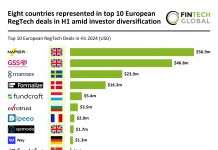Mobile operators will generate $27bn from SMS messages related to multi-factor authentication in 2022, an increase from $25bn in 2021, according to a study from Juniper Research.
Its new report, ‘Mobile Authentication: Future Strategies & Market Forecasts 2022-2027’, predicts this 5% growth will be driven by increased pressure on digital service providers to offer highly secure authentication that reduces risk of data breaches and protects user identity.
Multi-factor authentication combines two or more credentials to verify a user or transaction. This includes sending an SMS that contains a one-time password or code to a user’s unique phone number.
In its report, Juniper Research urges mobile operators to capitalise on the growing demand for multi-factor authentication SMS traffic, by leveraging firewalls to monitor and identify SMS traffic specifically used for multi-factor authentication. Through this, operators will be able to charge a premium on the traffic and further increase business messaging revenue.
Furthermore, the report predicts there will be over 1.7 trillion multi-facto authentication messages sent globally in 2022. This will account for 60% of total SMS business messaging traffic.
Juniper Research also urges companies to create machine learning algorithms that automate the monitoring of the traffic to efficiently identify messages that can be charged at a premium.
Research co-author Keith Breed said, “Automating traffic detection is crucial for operators as we expect multi-factor authentication traffic to grow to 2.1 billion messages by 2027. SMEs have typically not invested in messaging for security in the past. However, rising pressure to implement greater security for users will drive adoption amongst SMEs over the next 5 years, and increase global traffic.”
Copyright © 2022 FinTech Global











